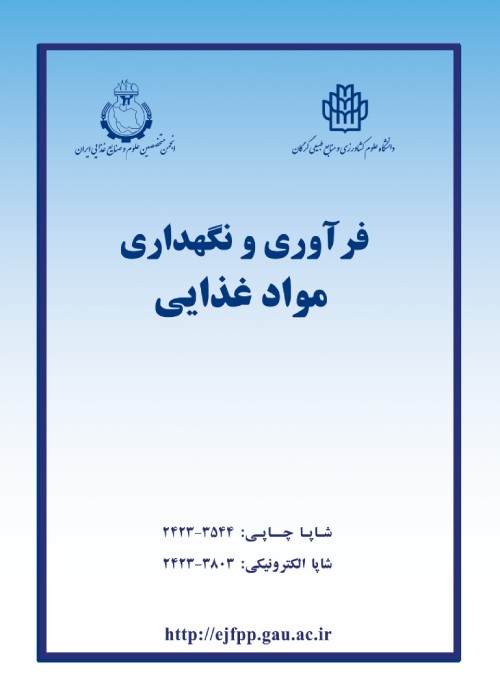Investigating of Chemical Composition and Anti-Listeria Properties of Zataria multiflora Boiss Essential Oil, And Its Application with Nisin in Chitosan Nano- Coating in Chicken Fillet
Nowadays, the interest in using food coatings and films such as bacteriocins and plant essential oils, due to factors such as environmental concerns due to the use of synthetic packaging materials, the need for new methods and opportunities to create new markets for food products, the need for food to increase. The shelf life of products and the tendency of consumers to consume natural materials are expanding. Nanotechnology in edible coatings can increase their efficiency compared to conventional edible coatings by reducing particle size and smaller pore sizes, and improve the quality of packaging materials. The high ability of chitosan to form a film has made it possible to use it as a suitable food coating. Essential oils with antibacterial properties can be used to enhance the antibacterial properties of chitosan. Also, foodborne illness has always been one of the most important human concerns and the present study was conducted to investigate how to reduce these risks.The objective of this paper was to investigating the chemical composition of Zataria multiflora Boiss essential oil, and its application with nisin in Nano-emulsion of chitosan-based coatings containing Nano-emulsion against the Listeria monocytogenes in chicken fillets, kept at cold temperatures (4±1°C) during a 16-days period and Antibacterial activity of essential oil (as emulsion and Nano-emulsion) against the studied bacterium was evaluated by the MIC and MBC methods.
The chemical composition of the essential oil was determined using gas chromatography, and the treatments were divided into the six groups of: without coating (control), chitosan, Nano-chitosan, Nano-chitosan containing essential oil, Nano-chitosan + nisin, and Nano-chitosan + essential oil + nisin. The samples were then transferred to the refrigerator for bacterial counting on days 0, 2, 4, 8, 12, 16.
Carvacrol 44.36%, thymol 30.14% and gamma-terpinene 8.31% were identified as the most important compounds in the chemical composition of the Zataria multiflora Boiss essential oil. The mean logarithm of the number of bacteria counted in the 16-days period showed a significant difference between the groups (p <0.05). The present study showed that the highest inhibitory effect on the bacteria compared to the control group ware noticed in treated samples with chitosan Nano-emulsion containing nisin and Zataria Multiflora Boiss essential oil group.
The results of this study showed that Nano-emulsion of chitosan edible coating is the effectively capable of inhibiting the growth of pathogenic Listeria monocytogenes bacteria in chicken fillet samples at cold temperatures and its use can be considered in the food industry.
- حق عضویت دریافتی صرف حمایت از نشریات عضو و نگهداری، تکمیل و توسعه مگیران میشود.
- پرداخت حق اشتراک و دانلود مقالات اجازه بازنشر آن در سایر رسانههای چاپی و دیجیتال را به کاربر نمیدهد.


